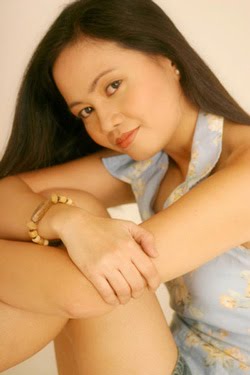skip to main |
skip to sidebar
Spring is nature's way of saying, "Let's party!"
~Robin Williams

Camera: Canon PowerShot A710 IS
Exposure: 0.001 sec (1/1000)
Aperture: f/4.0
Focal Length: 5.8 mm
Modifications: Cropping, adjusted brightness and color levels
Date & time: 25 April 2009 at 14.29 EEST
Location: Kerimäki, Finland
Spring has sprung! I couldn't help but get ecstatic about it. Yeah, I took nature photos during the winter months, but I was in Asia from Mid-December 'til February. To me, winter is not the best time of the year to take photos, lack of light always makes my photos look dull. Moreover, I always get blurred photos because my hands get shaky, thanks to the extremely cold weather.
Good lighting is a major ingredient of stunning photographic compositions. It's wonderful to be in here in Finland during spring and summer because of the lovely natural light. When I was in the Philippines I had a chance to meet my fellow macro addicts for a photowalk:
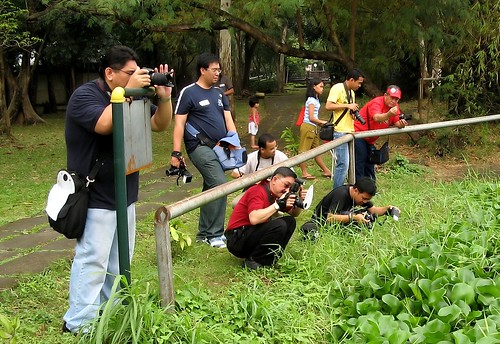
The weather wasn't perfect then, I had to use flash most of the time, as a result, 80% of the photos were quite dull. Although most of my shots sucked, I absolutely enjoyed shooting with the pros. I would definitely join them again on my next vacation. For the mean time, I'm back doing solo photowalks. I have a higher 'success rate' here in our own yard, thanks to the lovely spring sunshine. I took 20 photos a couple of days back, and most of them are good -according to my belief. Here are two new photos:
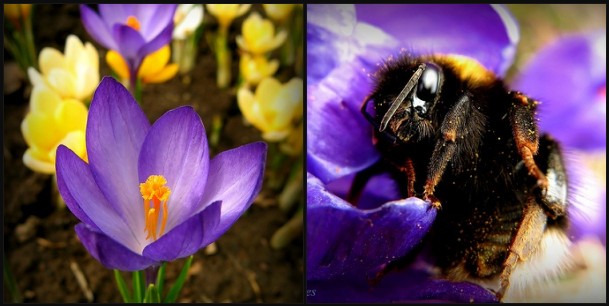
If you you want to give macrophotography a shot, keep in mind that it is about showing off the details. This can be achieved by taking photos when natural light is at its best. I still get emails from photographers who are curious about the brand or type of macro lens that I use, news flash: I don't have one yet. If Santa Claus will give me a DSLR plus the kind of macro lens that would best suit my usual subjects, of course I would accept it. I am not counting on it though because I can't be nice all year. My little camera is still okay, but it is no longer as efficient as it used to be. Its manual focus still works perfectly, which means that I can still make do with it.
I have always been focused on improving my so-called skills, setting goals have always been helpful. For this season, I will experiment on abstract macros and minimalism. Of course you would still see shots bearing my usual style. I hope that my photos in the weeks to come will be better than my 2008 spring collection. It's a tall order, but with the wonderful spring sunshine, I see better photos in the horizon. Do I sound ridiculously optimistic? Well.. blame it on spring :-)
“Excellence is in the details. Give attention to the details and excellence will come.”
~ Perry Paxton
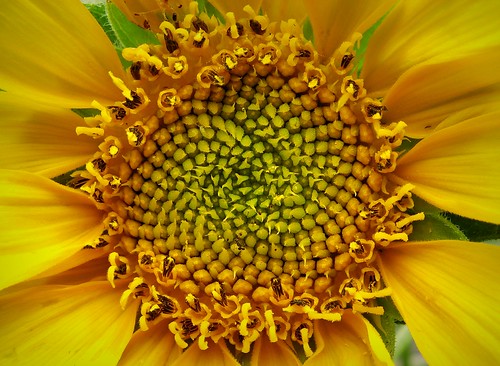
Pardon my nearsightedness
Camera: Canon PowerShot A710 IS
Exposure: 0.005 sec (1/200)
Aperture: f/4.0
Focal Length: 5.8 mm
Modifications: Adjusted temperature & brightness level
Date & Time : February 7, 2009 at 13.40 Manila Time
Location: Parks & Wild Life, Quezon City, Philippines
Late last year, I had an opportunity to write for an upcoming stock photography site. I had to read about topics that I normally avoid: anything with numbers. The numerical system is like a horrible nightmare, I have spent most of my life eliminating it from my path. Whenever I read about photography, I tend to skip the topics that seem too difficult to understand. However, as I was working on that photography project I had to understand rules of composition where numbers play an important role. It was a good learning experience and I am glad that I had a chance to see numbers and formula in a different light.
It has been found that the things that we find visually appealing bear the numbers in the Fibonacci series: 0, 1, 1, 2, 3, 5, 8, 13, 21, 34, 55, 89, 144, 233, 377, 610.. The number of petals of most flowers are Fibonacci numbers. Take a closer look at sunflower photo above, it has two sets of spirals, one runs clockwise and the other set runs anticlockwise. The number of spirals are always two consecutive numbers in the Fibonacci series- don't you find that fascinating? There are still many pieces of evidence that link the presence of Fibonacci numbers in nature.
The ratio of each successive pair of numbers in the Fibonacci series is about 1:1.618. What's the significance of that ratio? It is close to 1:1.618034 otherwise known as divine proportion, golden section or golden ratio. Many stunning structures from ancient to modern buildings were built based on the golden ratio. The golden ratio exists in famous art pieces of great artists like Leonardo da Vinci, Michaelangelo and Rembrandt. The use of golden ratio is not exclusive to those big names in the field of art. A regular person like me, for example, can always try to apply it to photographic compositions. After all, if a certain formula can increase the probability to capture viewers' attention, then making use of it shouldn't be a bad idea.
Remember the rule of thirds? It is actually a simplified version of the golden mean. In the rule of thirds, you divide the image into 9 equal parts. But if you want to apply the golden mean to your photos, the image should be divided with 2 vertical and 2 horizontal lines into 9 unequal but symmetrical parts.
Golden ratio: 1:1.618034
a:(b+c),b:a, (a+b): height
d:(e+f),e:d, (d+e):width

Placing the highlight of the image along these lines, especially on the intersections or power points would make the photo more appealing.
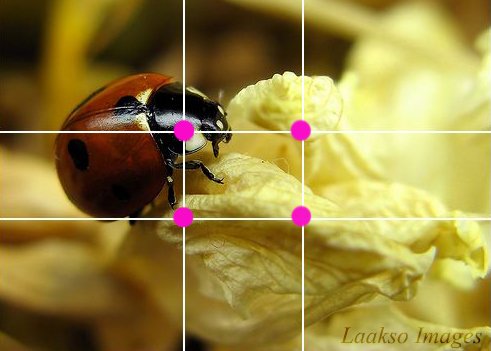

The golden spiral is another application of the divine proportion. This is done by making rectangles of increasing sizes by using the golden ratio 1:1.618.
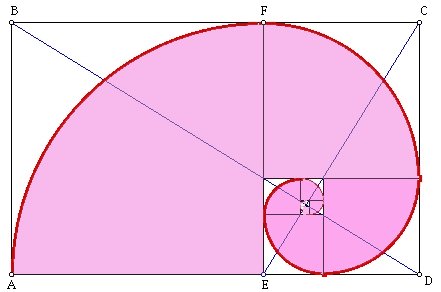
If we will use this on staircase photos and shells like the the pros, may be our shots will look as appealing. The golden spiral can also be used for landscape photos. This shape is found everywhere in nature: the nautilus shell, ram's horns, sunflower heads, fingerprints, DNA and the shape of the Milky Way.
The subject or the interesting part of the image should be in the smallest rectangle. While it should be easy to apply the golden spiral to close up photos, I thought it would also be nice to show you a landscape shot. I don't have a decent one so I had to look for a good sample photo from a web gallery of a pro.
Take a look at the photo below and notice how the rainbow is perfectly positioned in the tiniest rectangle.
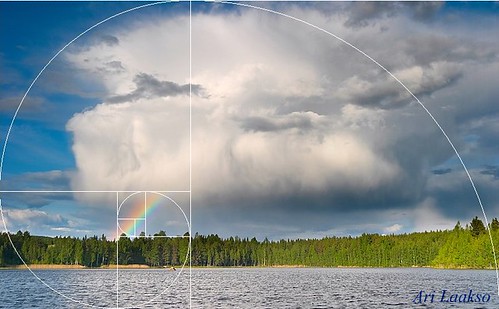
I find this photo very impressive not just because it was taken by my husband. Would you believe that he didn't even bother thinking about complicated-sounding golden spiral, and yet the highlight of the shot landed on the right spot? How could that be possible? I some people have the innate skill to do everything right. I am not among those fortunate ones, so I guess practice is my only option. I believe that if one would always apply the rules of composition to his or her work, chances are, it will be in their system like an incurable disease.
If you think the golden ratio is too complicated and not fun at all, then by all means, don't bother stressing yourself. Photography shouldn't trigger anxiety. I've got some good news though: you can always make photography simple and fun. Get a camera that has Rule of Thirds grids on the LCD. You can also use this online composition adjuster. All you have to do is load an image from your computer or a URL, and voila, you would get to check if your photos abide by the 'rules'. Just keep on practicing until you get the hang of it, then you're on your road to better photography skills.









